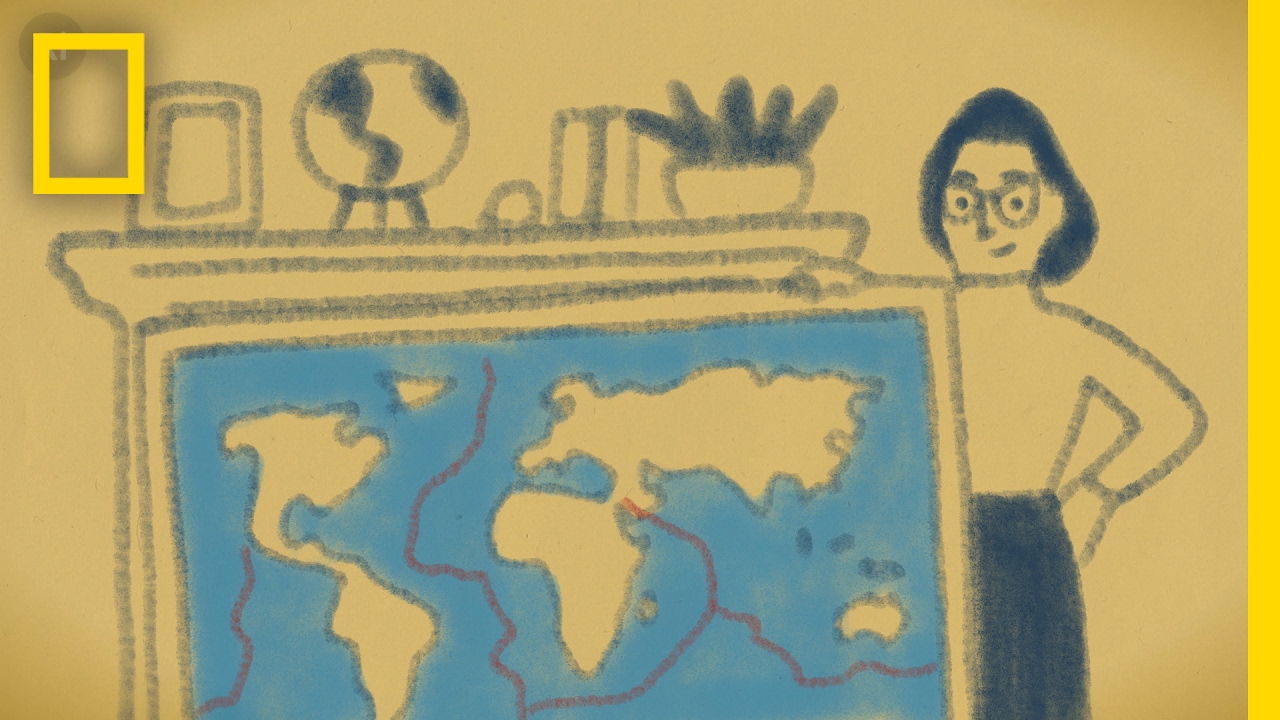National Geographic
Oceanic cartographer Marie Tharp helped prove the theory of continental drift with her detailed maps of the ocean floor. This animation by Rosanna Wan for the Royal Institution tells the fascinating story of Tharp’s groundbreaking work.
➡ Subscribe: http://bit.ly/NatGeoSubscribe
➡ Get More Short Film Showcase: http://bit.ly/ShortFilmShowcase
About Short Film Showcase:
The Short Film Showcase spotlights exceptional short videos created by filmmakers from around the web and selected by National Geographic editors. We look for work that affirms National Geographic’s belief in the power of science, exploration, and storytelling to change the world. The filmmakers created the content presented, and the opinions expressed are their own, not those of National Geographic Partners.
See more from National Geographic’s Short Film Showcase at http://documentary.com
Get More National Geographic:
Official Site: http://bit.ly/NatGeoOfficialSite
Facebook: http://bit.ly/FBNatGeo
Twitter: http://bit.ly/NatGeoTwitter
Instagram: http://bit.ly/NatGeoInsta
About National Geographic:
National Geographic is the world’s premium destination for science, exploration, and adventure. Through their world-class scientists, photographers, journalists, and filmmakers, Nat Geo gets you closer to the stories that matter and past the edge of what’s possible.
In the early part of the 20th century, German geophysicist Alfred Wegener proposed a revolutionary idea that made him the laughingstock of his peers. His “continental displacement” theory suggested that the earth’s continents once formed a single land mass that had gradually drifted apart over time. Wegener was largely disregarded by the geoscientific community until 1953, when a young cartographer named Marie Tharp began charting ocean floor depth measurements. In partnership with geologist Bruce Heezen, Tharp’s detailed maps of the ocean floor revealed rifts and valleys that supported Wegener’s controversial theory. Initially dismissed as “girl talk,” Tharp and Heezen finally brought the concept of plate tectonics to the mainstream in 1968 when they published their ocean floor map in National Geographic Magazine. Cementing her place in history, Tharp was awarded the National Geographic Society’s Hubbard Medal in 1978 for her pioneering research.
This animation by Rosanna Wan for the Royal Institution tells the fascinating story of Marie Tharp’s groundbreaking work to help prove Wegener’s theory.
Rosanna Wan – http://www.rosanna-wan.com/
Royal Institution – https://www.youtube.com/user/theroyalinstitution
How One Brilliant Woman Mapped the Secrets of the Ocean Floor | Short Film Showcase
https://youtu.be/vE2FK0B7gPo
National Geographic
https://www.youtube.com/natgeo
Source




Maybe it's unrelated but to make 2d animations like this do people mostly use adobe flash or other programs? and do you think the jitter effect is made with adobe after effects or from the flash?
beginner here ^^ sorry
This was very interesting.. more videos like this please 🙂
It wasn't just one women, the date was created and collected by many
you guys do realize there is landmass under the oceans??????????? continents cant just drift around on the water… lol
She was warned. She was given an explanation. Nevertheless, she persisted.
Explains the flat earth
who thinks that she was chutiya
awesome video!
incredible😍😍
that bitch had to be a lezbo because women are only good for pump and dump.
continental shift is a hoax invented by the chinese
Alfred Wegener called it all along.
👍Well done. Now we need to build her a statue.
Brilliantly made. What a wonderful story. Bravo.
1:25 boobies!!
You know what's heroic? What's commendable and beautiful? The concentration and determination Marie had to posses in order to work through the piles and piles of data, facing constant opposition and in return hearing the feedback that her research wasn't as valid because of her gender. We need more women in science.
Amazing Video, showed it to the rest of my class and they loved it!
Fascinating presentation. I was a student assistant d;uring the International Geophysical year about 1957 or 58 when Buce Hezen was chief scienstist aboard the M/V Theta when the Theta and the R/V Vema were doing this maping of the middatlantic trench as it was already named at that time. Any questions I was there at Lamont Observitory doing the grunt work on this project
very good animation
0:16 lol don't even bother lookin for my country cause it aint exist on the map
Umm. The German wasn't absolutely right. For one thing the Earth is not completely molten inside, or at least not enough to initiate plate tectonic activity, which in and of itself is impossible. A solid granite crust cannot sub-duct, and in order for plates to move around propelled by convective currents in a molten interior, the surface would be far to hot to sustain life.
Continental drift is a correct assumption. The reality here is that it was driven suddenly by a process called plate hydrology, best encapsulated by Walt Brown's Hydroplate Theory.
I think the first part is rong!
my eyes are hurting this art style is so wierd but cool at the same time lol
I was happy to include her story in my book, Map Worlds (Wilfrid Laurier University Press) that details the 700-year history of women in Cartography.
Yeah! You can do whatever woman 😉😘 as long as you want it.
It is brilliant!!!! Marie Tharp is my hero! She changed geology forever! Thank you so much for this cartoon👍🏻
nah
This art style…so messy…yet so clean. I love it.